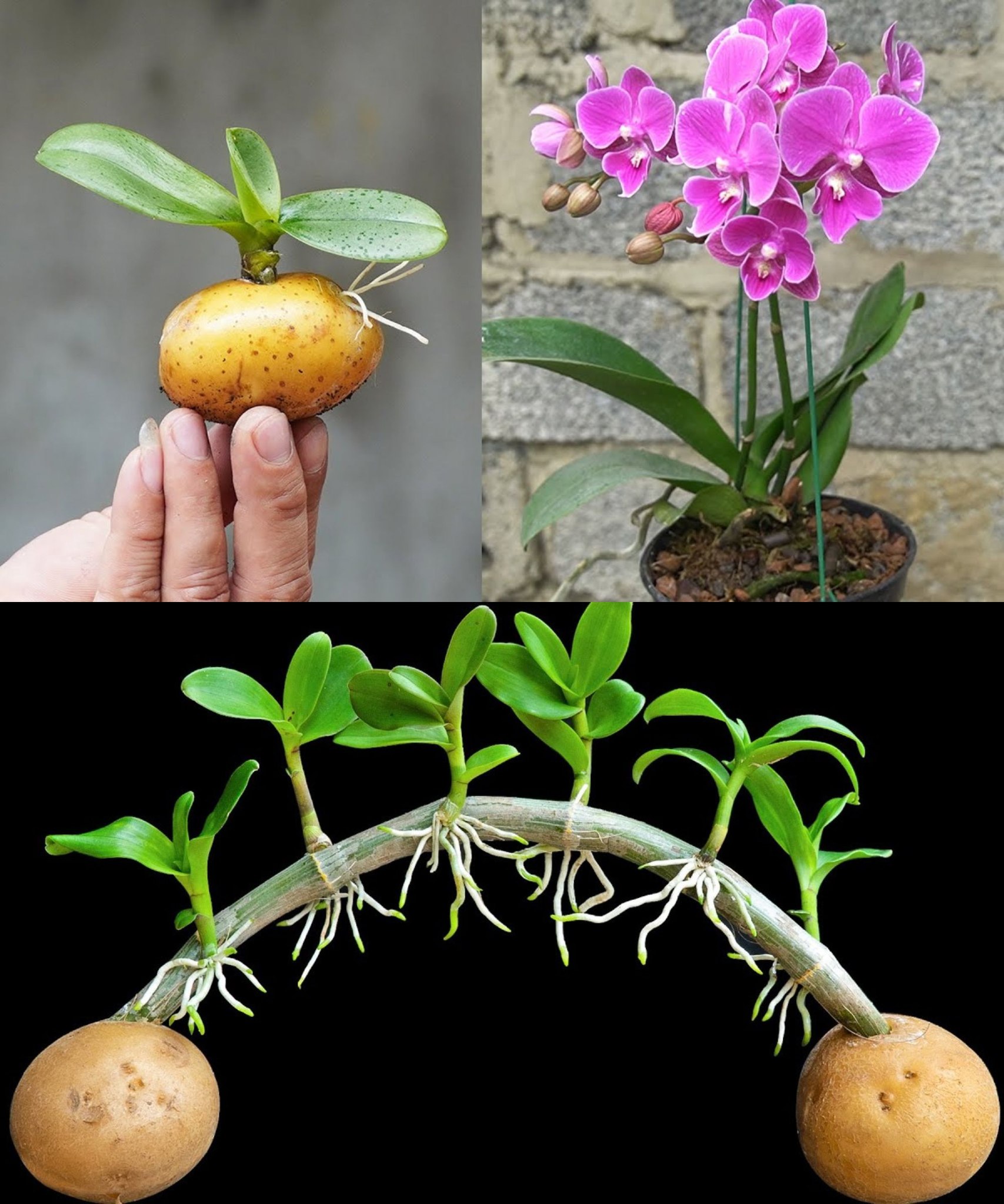
Growing orchids in potatoes is indeed an unconventional gardening method, but some enthusiasts claim that it can provide a suitable medium for orchids to thrive. Here’s a step-by-step guide:
Materials Needed:
- Orchid: Choose an orchid species that is known for adapting well to unconventional growing mediums. Some orchids that are more adaptable include Phalaenopsis and Cattleya.
- Potatoes: Select healthy and firm potatoes. Potatoes are chosen for their moisture-retaining properties.
- Knife: To cut the potato into suitable pieces.
- Pot or Container: Use a pot or container with drainage holes to prevent waterlogging.
- Orchid Potting Mix (optional): You can use a standard orchid potting mix if you prefer a mix of potato and traditional orchid medium.
- Watering Can or Sprayer: For regular watering.
Steps:
- Selecting and Preparing the Potato:
- Choose a potato that is firm and healthy.
- Cut the potato into small, manageable pieces. Each piece should be large enough to provide stability for the orchid.
- Selecting the Orchid:
- Choose an orchid plant with healthy roots and suitable for potting.
- Preparing the Pot:
- Fill the pot with the potato pieces, leaving enough space for the orchid.
- You can mix in some orchid potting mix with the potatoes if you prefer.
- Planting the Orchid:
- Place the orchid on top of the potato pieces in the pot.
- Adjust the position of the orchid so that its roots are in contact with the potato pieces.
- Watering:
- Water the orchid and potatoes thoroughly. The potatoes will absorb and retain moisture, providing a humid environment for the orchid roots.
- Light Requirements:
- Orchids generally need bright, indirect light. Place the pot in a location that receives suitable light for the specific orchid species.
- Monitor Moisture Levels:
- Check the moisture levels regularly. Potatoes tend to retain moisture, but you want to avoid waterlogging.
- Fertilizing (optional):
- You can use a diluted orchid fertilizer periodically if the orchid appears to need additional nutrients.
- Repotting:
- As the potato breaks down over time, you may need to repot the orchid into fresh potato pieces or a traditional orchid medium.
- Observation and Care:
- Monitor the orchid for signs of growth and overall health. Adjust care as needed.
Remember that this method is unconventional, and success may vary depending on various factors, including orchid species, environmental conditions, and your specific care routine. Regularly check the orchid’s health and consider repotting if necessary.
